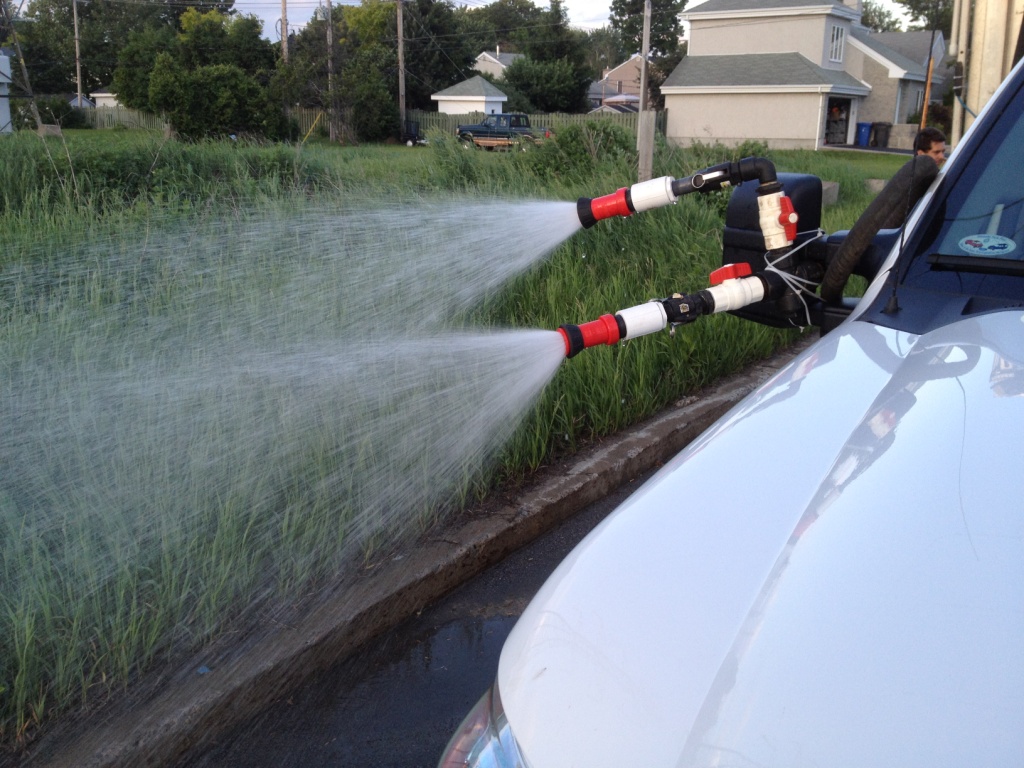Right-of-Way & Roadside Management
Expertise & Know-How
Herbanatur has specialized for nearly two decades in the development of innovative spraying technologies that optimize the performance of invasive and toxic species management operations.
We offer the public and private sector various specialized services involving the management and control of unwanted vegetation.
Our expertise developed in the field over the past twenty years gives us know-how recognized and proven by the Quebec Ministry of Transport (MTQ) and the Society of Outdoor Establishments of Quebec (SEPAQ).
Several Quebec municipalities can also testify to the purity and effectiveness of our interventions.
Eco-Friendly Vegetation Control
To be able to significantly lower the pollen concentration in the air and gradually reduce the reservoir of viable seeds in the soil, the strategy proposed for each season consists in:
1- Locate and map out ragweed throughout the territory
2- Control over a period of five consecutive years
3- Measure the pollen concentration during each season
4- Decide on the performance of operations
5- Trace a complete assessment
6- Improve the overall performance of operations
Sampling & Analysis
This scientific aerobiology component set up by Herbanatur, Inc. consists of taking daily samples from pollen sensors and measuring the pollen level produced by Ambrosia on different sites treated with our herbicide ecological compared to neighboring untreated sites. This exercise is repeated simultaneously on a dozen different regional sites during the months of July, August, September and October. A scientific reference report is published each season.
To determine the concentration of ragweed pollen in the air, expressed as the number of grains per cubic meter of air (grains / m3), an independent laboratory (Aerobiology Research Laboratories) analyzes the stems to determine the number of pollen grains in the samples that have been taken. For the sake of transparency, all the sampling stations were installed in the backyards of randomly selected citizens. These citizens are responsible for collecting all samples daily. The number of pollen grains is determined by microscopic examination of the polystyrene rods. The study of the stem is done using a 20X magnification and 15 microscopic fields have been analyzed. Ambrosia pollens were distinguished from other particles and counted.
References: The city of Montreal’s air quality monitoring network (RQSA2003), based on studies by Comtois (1995), established risk levels of allergic rhinitis for the population based on the pollen concentration according to the following grid.
Field & Roadside Management Operations
Workflow: Screening and spraying operations normally take place between July 15 and September 30.
Intervention frame: Pollen peaks take place around the third week of August and last until the end of September. Average temperatures for October are increasing year by year, extending the pollen season to the first frost.
Mowing: The synchronization of mowing operations just before the control operations allows us to maximize our interventions in certain problematic sectors.
Anticipated Results
Impact on air quality: The reports produced from the various data collected during the 2005, 2006 and 2007 seasons demonstrate that our interventions have a positive impact on air quality.
According to aerobiology reports, the pollen concentration is on average 4 to 6 times lower in the treated areas. We are therefore able to improve in the short term the quality of life of those who suffer from respiratory allergies and thereby reduce the substantial socio-economic impacts caused by the pollen of this plant.
Impact on the plant cover of ragweed: Ragweed is an opportunist. It adapts very well to soil conditions which are often difficult for other species of plant cover. Road corridors represent 90% of public infrastructure at risk. Road borders are the main source of seed dispersal. To measure the impact of the operations on the quantity of plants found in each of the treated areas, we compared the quantity of product used from one season to the next. Considering that the same areas are inspected and treated each season, we can assume that the quantity of product used is proportional to the quantity of plants treated.
We can confirm that after 3 consecutive years of systematic intervention throughout the territory that the plant cover of Ambrosia can be reduced by 50% on 70% in treated areas.
Highlights
A significant reduction in the ragweed population by 50% in approximately 70% of the areas treated. A significant reduction in the seed tank in the soil by around 30% in 70% of the areas treated.
A reduction of four to six times on the quantity of allergenic pollen in the treated sectors compared to the untreated sectors. No significant negative effects on the surrounding environment or vegetation could be observed.
Problematic infrastructures: The road corridors are very favorable for the dispersal of seeds of Ambrosia. These wind corridors disperse billions of viable seeds from plants that are found along infested roads each season and help increase the amount of pollen in certain areas depending on the wind direction.
Protection: It is very important to protect areas that have been controlled for the past four years by limiting the spread of viable seeds from nearby infested areas. All public and private managers in the areas controlled by our action plan should be invited to follow our example.


